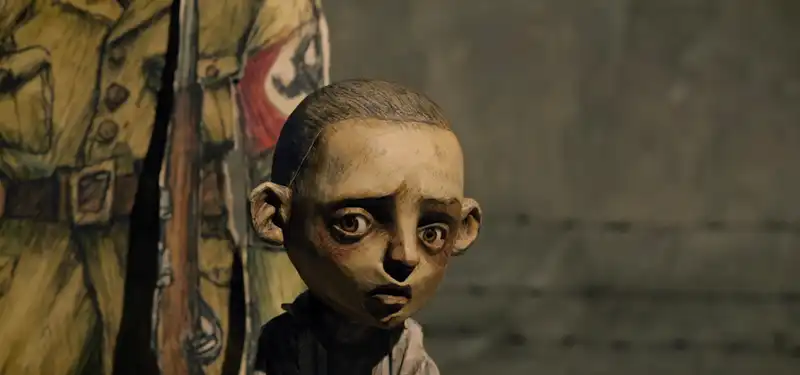Oct 16, 2023
2024 Academy Award Nominee for Best Short Film: "Humo" directed by Rita Basulto
Welcome to Cartoon Brew's spotlight series highlighting animated short films that have qualified for the 2024 Academy Awards. There are several ways for a film to qualify for an award. In this edition, we will focus on films that have won an Oscar-eligible award at a festival that is eligible for the Academy Awards.
Today's short is "Humo," directed by four-time Mexican Academy Ariel Award winner Rita Basulto. "Humo" won the Best Animated Short Award at HollyShorts and qualified for the Academy Award.
Humo, a stop-motion animation, tells the first-person story of a small boy living in a Nazi concentration camp. As a carefully detailed, rugged puppet moves slowly through the camp, the protagonist describes his life with heartbreaking innocence and naivete.
Cartoon Brew: This short is an adaptation of a short story, how did you go about the writing process? We acquired the rights to the book through the Spanish publisher OQO, and Juan Medina, who is also the producer of the film, wrote the screenplay. Over the years we have produced several short films inspired by OQO's children's books. The scripts are adaptations of beautifully illustrated children's stories. Among them, we discovered Humo, illustrated by Joanna Consejo. It is a powerful and moving story, and I still remember being moved to tears by the poetic sentiment of its powerful imagery.
What attracted you to this story and concept and what made you decide to direct this film? It shows the brutal contrast between inhumanity and innocence, thus achieving one of the deepest and most powerful voices in human consciousness, which remains a poignant and endless echo in our souls to this day. The innocent will not survive, said Primo Levi, and that is the price for seeing the light.
What did you learn about the production aspect, the filmmaking aspect, the creative aspect, or the subject matter through the making of this film? No matter how long it takes, quality cannot be sacrificed just to meet organizational deadlines. I also learned that technology is a great ally in reducing production time and improving the quality of the work. Technology eliminates excuses for not producing and for not following through on projects.
How did you develop your visual approach to this film and why did you settle on this style/method? Faced with a story that required many locations and countless extras, I had to sit down and think a bit before arriving at a design that would be projected on the screen. I decided to go the resource-conserving route and adopted the mantra 'less is more'. I wanted to use some symbolic elements. For example, using lines to symbolize the loss of freedom. The bars on the uniforms, the barbed wire, the pillars and beams of the barracks, the bunk beds, and the lines on the faces of the characters and cardboard extras were also considered. Our story unfolds in an imperfect world where asymmetry and disproportionality reign, from the bodies and faces of the characters to the details of the set design.




Post your comment